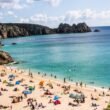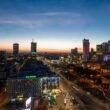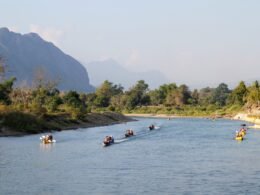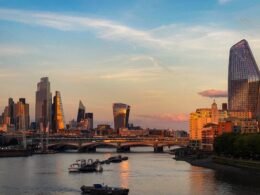One of the most biodiverse countries in the world and packed with a rich cultural history, Ecuador is a unique destination in South America. Not only do you have access to a diverse set of cities and colonial cobblestone plazas, but Ecuador is also home to the Galapagos Islands, which are a once-in-a-lifetime opportunity to see.
If you are planning a trip to Ecuador, here is the best 7-day itinerary to ensure you experience all of the highlights.
Upon arriving in Ecuador, you will land at Mariscal Sucre International Airport in Quito. The airport is about 43 kilometers from downtown Quito. The two options to get from the airport to Quito are:
By private car or taxi: Best if you are on a time crunch, or just want a more straightforward and hassle-free transport option. You can hail a taxi from outside the airport, or book one in advance. The typical cost of one ride is about $25 USD.
If you are a budget traveler and don’t mind taking public transport, you can take the public bus which stops at the airport and takes you to downtown Quito. Bus lines 198, 199, and 200 go downtown, and one-way fares typically cost between $2-10 depending on the bus.
Day 1: Arrive in Quito
Your Ecuador adventure begins in the capital city of Quito. After arriving, spend the rest of the day exploring the historic downtown

Middle of the World City
One of the most iconic landmarks in Quito is the Middle of the World City, which is located in the exact spot that is technically the middle point of the world. Known as Ciudad Mitad del Mundo in Spanish, this is a popular tourist destination in Quito. The monument is surrounded by grassy park and has a stunning backdrop of the Andes mountains. The site also houses a solar museum with exhibits on Ecuadorian indigenous culture. Admission to the park is $5.
Independence Square
You cannot leave Quito without exploring its beautiful colonial downtown. Known as Plaza de Independencia in Spanish, this square is considered the heart of historic downtown Quito. It was constructed in 1563 and was originally a water source point for the people living in the city. It is a great starting point for exploring the rest of historic Quito for shopping and sightseeing. Make sure to try the street food from one of the many street vendors which inhabit the plaza.
Take the teleferico
If you want to take your day in Quito to greater heights, check out Quito’s teleferico, or aerial cable car. The ride is about 18 minutes in duration, and carries you over the entire city of Quito. It is one of the highest aerial lifts in the world. At the end of the trip, you will end up at the start of the trail to hike the volcano Pinchincha, which you can embark on if you are feeling adventurous.
Where to eat
Where to stay in Quito?
- $$$ – ILLA Experience Hotel, Hotel Patio Andaluz
- $$ – The Secret Garden Ecuador, Hotel Quito
- $ – Bluehouse, Community Hostel
Day 2: Day trip to Cotopaxi National Park
Take a day trip from the city to Cotopaxi National Park, one of Ecuador’s most famous national parks.

Travel time: The best option for visiting Cotopaxi National Park is by going straight to a hotel on the park called The Secret Garden. The hotel’s other location in Quito offers direct shuttles to the park. The entrance fee to the park is $10.
There are plenty of great hiking opportunities in Cotopaxi which can be done in a day. Some of them include:
- Cotopaxi Trek
- Quilotoa Lagoon
- Illiniza Norte
- Cerro el Corazón
Where to eat in Cotopaxi?
Day 3: Guayaquil
Travel time: Write down the travel time to get to the next place. Please note, if the place is the same, eg, for the first 3 days of the itinerary you stay in the same city, you can remove this section.
As you prepare for your trip to the Galapagos, stop in the closest mainland city, Guayaquil. Here, you can settle in and explore some of the city’s best parks.
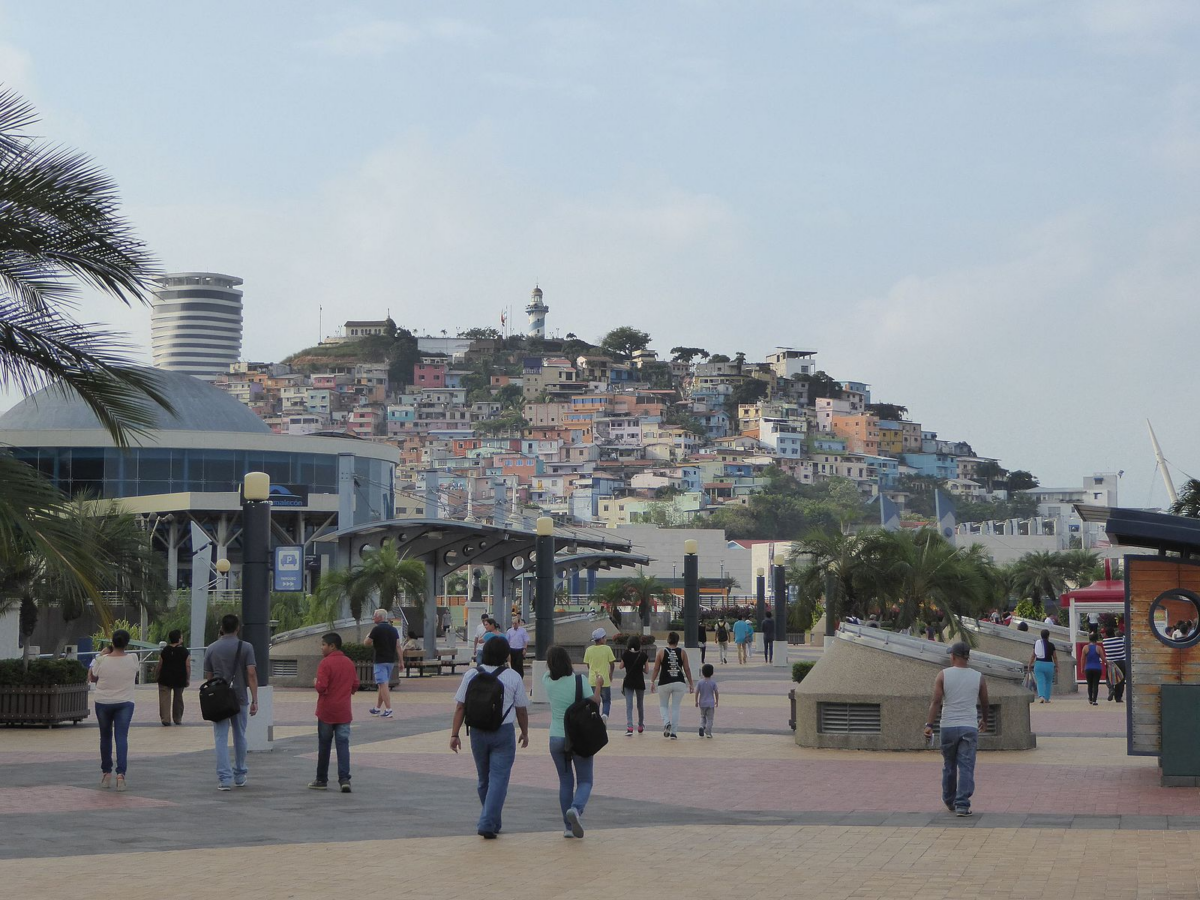
Malecón 2000
Malecón 2000 is a great place in Guayaquil to stroll along the coast. It is a several mile boardwalk that features local food, souvenir shopping, and scenic river views. The Simon Bolivar Pier at the end of the boardwalk offers a large ferris wheel known as La Perla.
Go iguana watching in Parque Seminario
Parque Seminario is another small but quaint park in Guayaquil which is great for relaxing and people watching. One of the most unique activities you can do in this park is go iguana watching, as iguanas frequently habitat the park. Locals are so accustomed to the iguanas that they rarely bat an eye. They are usually quite friendly and will often approach you, so be careful and always keep some distance.
Where to eat in Guayaquil?
Where to stay in place name?
- $$$ – Hotel del Parque, Casa García
- $$ – Hotel Patrimonial, Unipark Hotel
- $ – Dreamkapture, Hostal Funky Monkey
Day 4: Arrive to Galapagos – Santa Cruz Island
You have landed in the Galapagos Islands, some of the most biodiverse islands in the world. Spend the day in Santa Cruz island and marvel at the exotic wildlife like sea lions and giant tortoises.
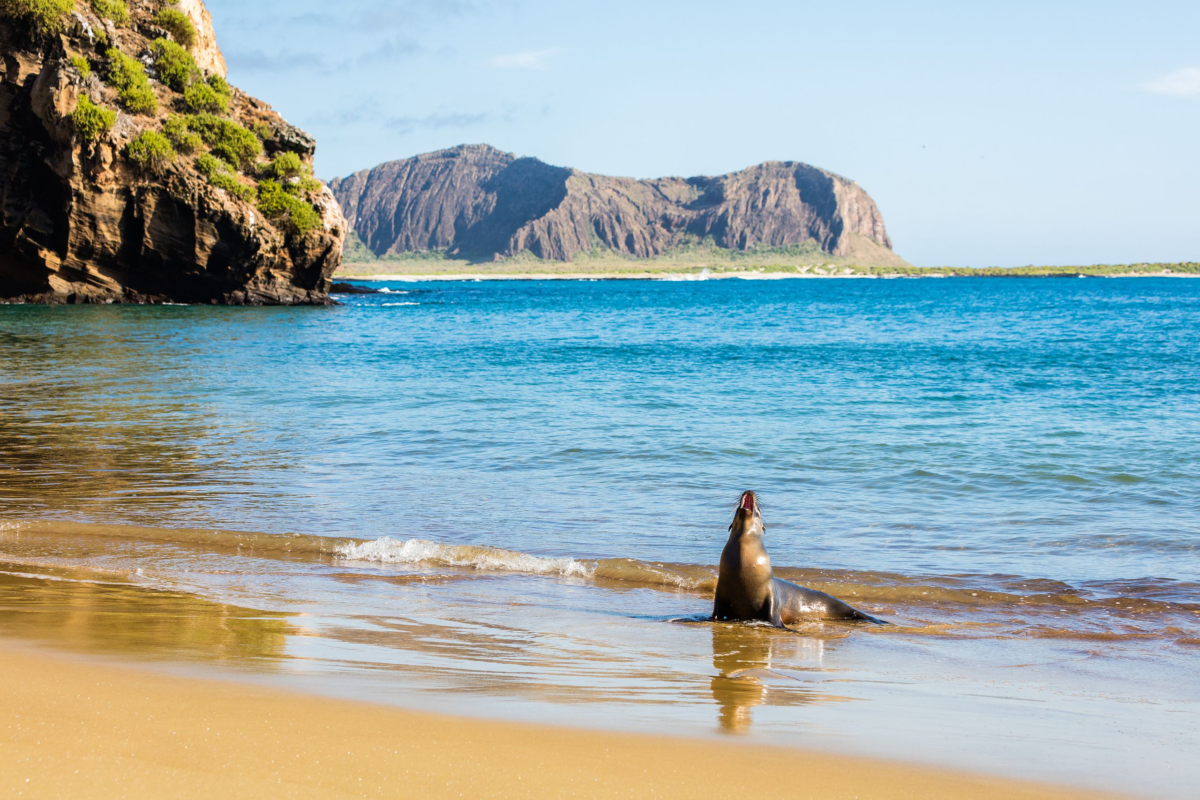
Travel time: To get from Guayaquil to the Galapagos, you will need to fly. Flight duration is about 1 hour and 45 minutes and usually costs upward of $200. There are about 20 flights a week that depart for the Galapagos from Guayquil.
Galapagos National Park
A UNESCO World Heritage site, Galapagos National Park is a must-see when visiting the islands. Some of the species that inhabit the park which you may see include blue-footed boobies, sea lions, marine iguanas, giant tortoises, and Galapagos penguins. There are several trails in the park to explore the endless nature of the Galapagos. Some of the most notable are the Santa Fe, Bartolome, and Frigate Bird Hill trails.
Where to eat in Santa Cruz island Galapagos?
Where to stay in Santa Cruz Galapagos?
- $$$ – Golden Bay Galapagos, Angermeyer Waterfront Inn
- $$ – Finch Bay Galapagos Hotel
- $ – Casa del Lago
Day 5: Go hiking in Isabela Island Galapagos
Head over to another popular island in the Galapagos and hike through the volcanoes.

Travel time: There is an inter-island ferry which can transport you between Santa Cruz Island and Isabela Island. Departures leave between 6 AM and 2 PM and trips take about 2.5 hours. One-way fare starts at $33.
Go to the beach
Since you are on an island, you will have plenty of access to endless coastline and pristine beach on Isabela Island. Not only are the beaches on the island most known for their white sand and crystal blue water, but you will be able to see the marine iguanas which inhabit the beaches.
Hike the Wall of Tears
Another important site on Isabela Island is the Wall of Tears, which was constructed between 1945 and 1949 by prisoners around a local prison. Because of the death that occurred in the construction, the wall is now called the Wall of Tears, or Muro de Lagrimas. You can climb to the top of the wall, which gives you panoramic views of the island.
Where to eat in Isabela Island?
Day 6: Cuenca
After finishing your trip to the Galapagos, return to mainland Ecuador for the final leg of your journey. Your last stop is Cuenca, a historic small city with plenty to see and do.
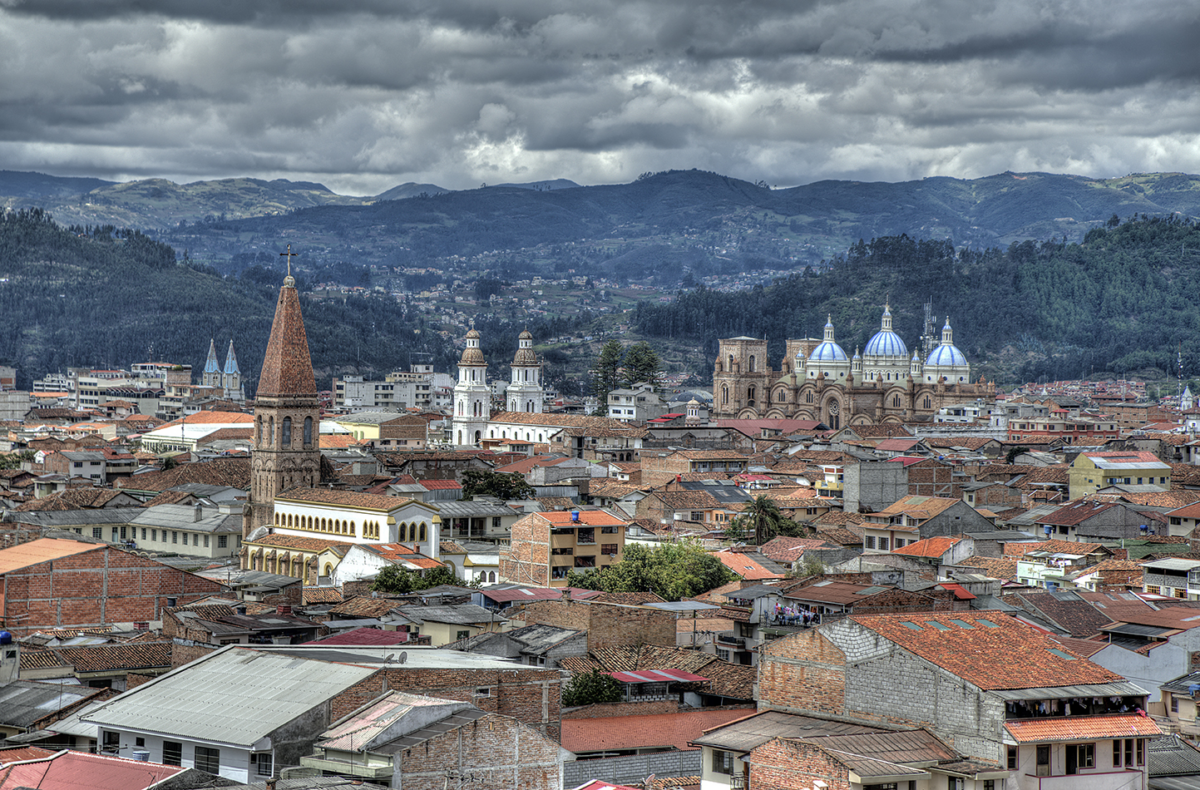
Travel time: The Galapagos operate flights from the islands to Cuenca, however, they are not direct. Average prices are about $200 one-way.
Calderon Park
After arriving in Cuenca and settling in, head over to Calderon Park, located in downtown Cuenca. It is the perfect spot for observing the natural vibrance of Cuenca, as it is a popular gathering spot for locals. If you get hungry, local street food vendors are never far, and you can enjoy an ice cream cone or Ecuadorian treat as you relax.
Pumapungo Museum and Archeological Park
Another cool aspect of Cuenca is that there are Inca ruins that lie practically in the middle of the city. Make sure to stop by the Pumapungo Museum, which is a museum located on the grounds of ancestral Inca remains. The actual museum contains exhibits that include traditional costumes and baroque art from the 18th century. One of the most popular artifacts is the shrunken head from the Shuar people of Amazonia. Museum entry is free, however you are not allowed to take photos inside.
Where to eat in Cuenca?
Where to stay in place name?
- $$$ – Mansion Alcanzar
- $$ – Selina Cuenca
- $ – El cafecito
Day 7: Cuenca: Visit the markets
Get a traditional cleansing at one of Cuenca’s central markets and explore the natural beauty of the city’s flower markets

Mercado 10 de Agosto
Considered the most traditional markets in the city, Mercado 10 de Agosto is most frequented by locals and will give you the most authentic Ecuadorian experience. Here, you can find fresh fruit, vegetables, street food, and fresh-squeezed juice. The market is also known for its more unique services.
If you want to have a once-in-a-lifetime travel story, check out one of the Limpias who frequent the market. These women will give you a spirit cleaning for the low cost of $2-3. These womes mostly speak the indigenous language Quechua and not Spanish. Cleaning methods include herbal baths, cleansing alcohol, and eggs. Try it for yourself and see if you feel lighter afterwards.
Explore the flower markets of Cuenca
A great photo opportunity, you can next head to the many flower markets which pop up in Cuenca. Flowers vary greatly in variety and color and are also quite inexpensive for you to buy some to take back to the hotel. Surrounding the flower market are other artensinal vendors selling pastries, bread, and crafts, so you will never get bored of shopping.
Where to eat in Cuenca?
Useful tips for traveling in Ecuador:

The best time to visit Ecuador
Since Ecuador sits on the equator, weather stays very consistent throughout the year. Ecuador does have a rainy and dry season, however. To avoid the rain, it is best to travel to Ecuador during its dry season, which is between June and September.
What is the currency of Ecuador?
Ecuador does not have a unique national currency, instead it uses the US Dollar (USD). That means that if you are coming from the United States, you do not need to exchange your money, which can be quite convenient. It is important to note that even though Ecuadoe uses USD, cost of living is considerably lower than in the United States, making Ecuador a great destination for budget travelers.
Can you drink tap water in Ecuador?
Unfortunately, tap water is not potable in the entire country of Ecuador. You can boil the tap water to make it safe to drink, but it is best to buy purified water to be 100% safe. You can also consider buying a filtered water bottle like the LifeStraw.
The language of Ecuador:
The national language of Ecuador is Spanish. If you don’t speak Spanish, you will probably get by in major tourist areas like Quito or the Galapagos. However, outside of major tourist areas, English proficiency in Peru is very low. It is essential to catch up on your Spanish before departing or keeping a downloaded or hard copy of an English-Spanish dictionary.
Here are some essential Spanish words and phrases you will use in Ecuador:
Hello – Hola
Goodbye – Adios
How much does this cost? – ¿Cuánto cuesta?
Where is the bathroom? ¿Donde está el baño? (pronounced bann-YO)
Can you help me? – ¿Puedes ayudarme?
Is Ecuador safe?
Ecuador is generally safe to travel to for tourists, however it is smart to always travel with increased vigilance and avoid walking around at night. Petty theft and pickpocketing is still common in Ecuador, most commonly in major cities.
Final thoughts
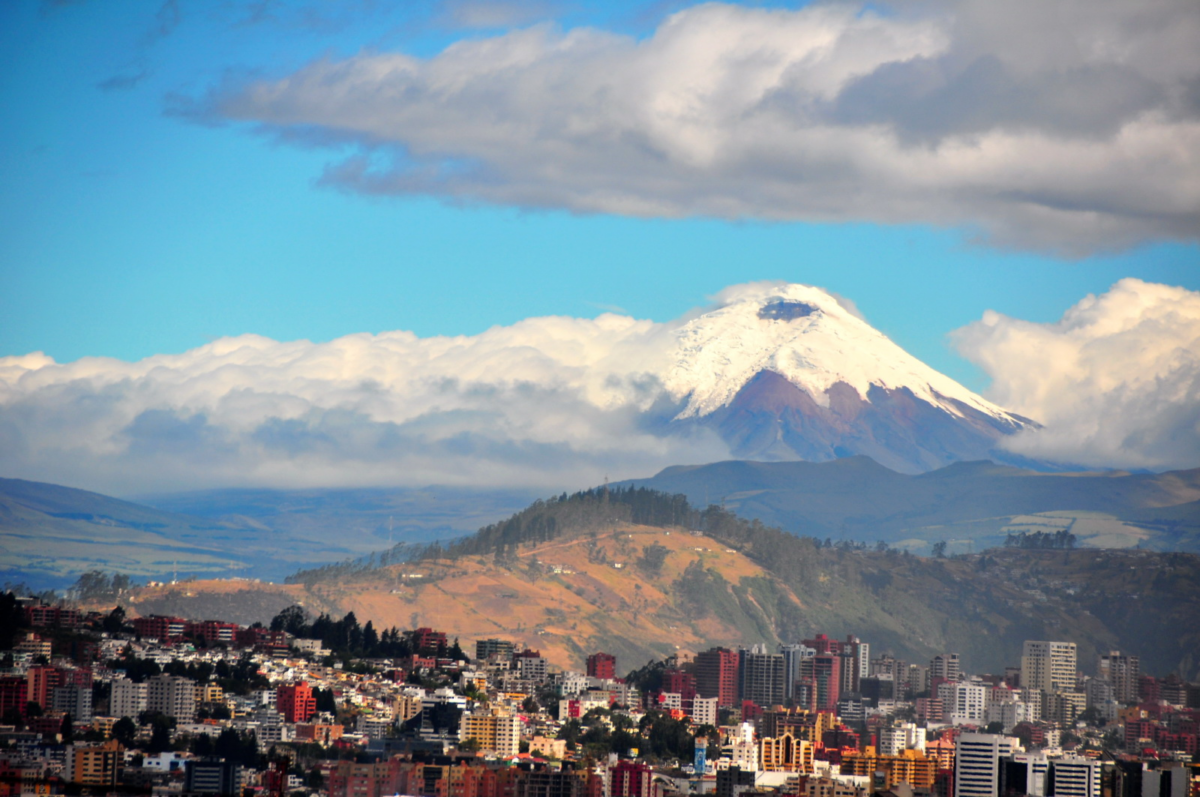
Ecuador is an country with incredible access to nature, a historic colonial downtown, food, and culture. If visiting Ecuador, make sure to budget time and money to fly and visit the Galapagos Islands, as you will not want to miss the opportunity to see them while visiting. Thanks to the relatively low cost of living in Ecuador, it makes for a perfect destination for budget travelers. Make sure to brush up on your Spanish or bring a translator if visiting Ecuador, as most of the population is not proficient in English.



